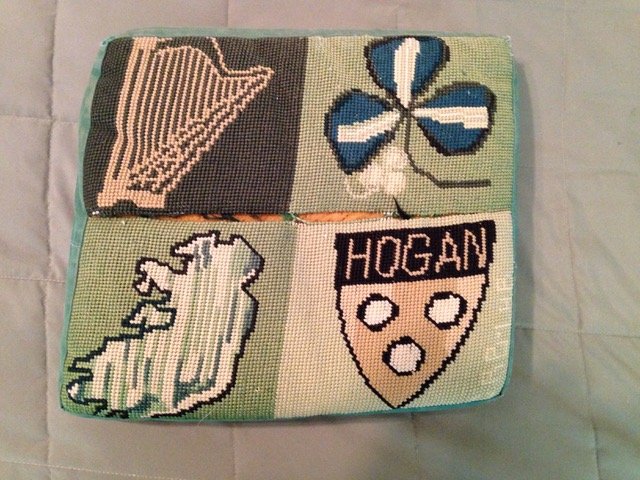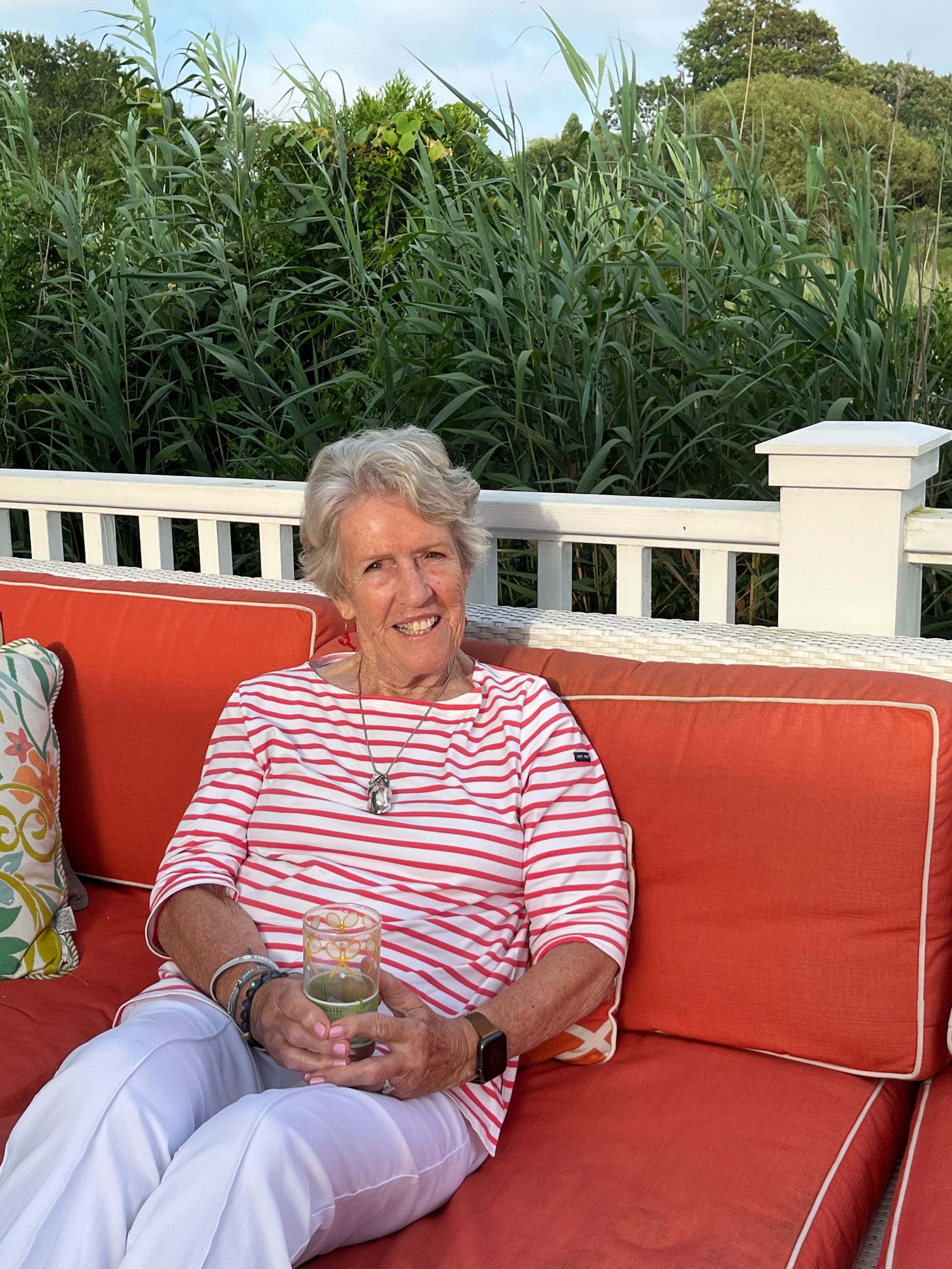ONE PROUD HOGAN
/My mom, Lucille Hogan Burkhardt, seldom walked out the front door without toting her large white pocketbook with a humongous shamrock stitched on the front. Every March, she hung home-made cafe curtains — featuring four leaf clovers scattered on a field of white, and hemmed with green ball fringe — on the window above the kitchen sink. She placed a needlepoint pillow honoring her beloved Ireland in a prominent spot on the sofa.
Irish lore and poetry rolled off her tongue. I clearly recall her reciting Yeats: “I will arise and go now, and go to Innisfree, And a small cabin build there, of clay and wattles made; Nine bean-rows will I have there, a hive for the honey-bee, and live alone in the bee-loud glade.”
Mom was 48 when she made her first trip to Ireland — solo, and on a seven-day bus tour. She eagerly waited in a long line at Blarney Castle to kiss the revered stone and enjoyed showing us the photograph of her hanging nearly upside down to accomplish that.
In her early 70s, she planned family trips to Milltown Malby, a hard-scrabble village in County Clare on Ireland’s west coast, minutes south of the soaring Cliffs of Moher. Her grandfather, Edward Hogan, had been born near Milltown Malby in 1837 and she wanted us to walk in his footsteps.
We stayed in simple white stucco cottages overlooking the Atlantic. Every evening we thwarted the misty cool ocean breezes by lighting peat bricks in the fireplace. We dined at Bunratty Castle, hiked the Burren, and each of us bought itchy Irish fishermen sweaters. We tasted our first Guinness at Cogan’s Pub in the village. Nearly every photo from that trip depict one happy Hogan mother.
In her later years, Mom proudly drove a bright green Volkswagen station wagon. Her favorite coat was a Burberry trench, but not in traditional khaki: hers was dark green. She told me that daffodils picked from her gardens looked best in Waterford containers. (And yet I cherish the Belleek vase she gave me for my 25th birthday.)
None of Mom’s four kids had traditional Irish names, like Sean or Colleen. But our DNA pulses with her heritage and we thrive on that wee bit of Ireland she imbued in us. At her wake in 1995, my brothers made sure Celtic music played constantly over the funeral home loudspeaker. I remember approaching her coffin and hearing the familiar lilt of “The Irish Washerwoman,” tears spilling, me smiling at the same time.
There are nearly 35 million Americans who claim Irish heritage today — one out of 10. But on March 17, that number multiplies bodaciously. Sales of Guinness skyrocket. Chicago’s river runs green. The world’s shortest St. Patrick’s Day parade — 100 yards between two pubs in an Irish village on the south coast— is celebrated with the same fervor as the grand shebang on Fifth Avenue in New York City.
Mr. Wonderful and I will celebrate the day at a friend’s house. His invitation reads: “Join us for corn beef Reubens on this very important holiday to celebrate my Dutch and French heritage.” On March 17, everyone is Irish!
SLAINTE IS TAINTE … and may your blessings outnumber the shamrocks that grow on this special day.
———————————-
This is a photo of my former dining room, taken on a St. Patrick’s Day years ago. You’ll see a vase filled with shamrocks and green carnations and, in the background, a portrait of a man we tell everyone is Edward Hogan, my great-great grandfather.
But as my mother always said, “Never let the facts stand in the way of a good story.”




